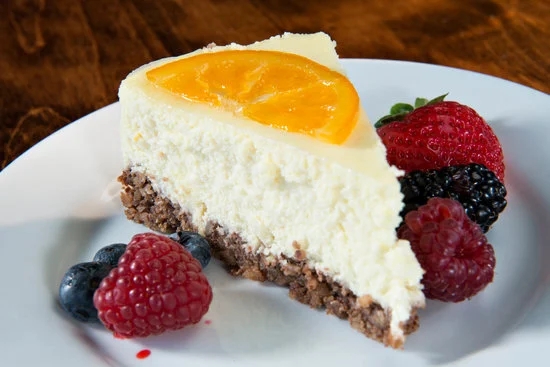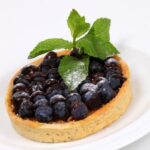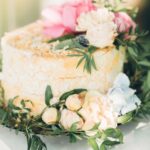Fresh flowers add a touch of elegance and natural beauty to cakes, making them a popular choice for cake decoration. In this article, we will explore how to use fresh flowers for cake decorating, providing you with tips and techniques to enhance your culinary creations. Whether you are a seasoned baker or just starting out, incorporating fresh flowers into your cake designs can elevate your desserts to new levels of sophistication.
Using fresh flowers for cake decorating can be a stunning way to add color, texture, and fragrance to your baked creations. From rustic buttercream-covered cakes adorned with wildflowers to elegant fondant designs featuring intricate floral arrangements, there are endless possibilities when it comes to incorporating these beautiful blossoms into your cakes.
In this guide, we will discuss the ins and outs of using fresh flowers for cake decorating, from selecting the right blooms to safe handling practices and creative decorating techniques.
While fresh flowers can transform a plain cake into a work of art, it is important to choose the right flowers and handle them properly to ensure food safety. We will cover everything you need to know about selecting edible vs. non-edible flowers for cake decorating, as well as how to clean and prepare fresh flowers before placing them on your cakes.
By following our tips and tricks for using fresh flowers in cake decorating, you can create visually stunning desserts that taste just as good as they look.
Choosing the Right Flowers for Cake Decorating
To use fresh flowers for cake decorating, it is recommended to wash them thoroughly before placing them on the cake. This helps remove any dirt or potential contaminants that may be present on the petals. Additionally, it is essential to remove the pollen from the flowers as it can cause allergic reactions in some individuals. Gently shake or brush the pollen off the flowers before arranging them on your cakes.
When adding fresh flowers to your cakes, consider the overall design and color scheme you want to achieve. Mix and match different types of flowers to create a visually stunning arrangement.
Pay attention to size and shape when choosing flowers – smaller blooms can be clustered together while larger blooms can serve as statement pieces on top of the cake. Experiment with different placement techniques such as scattering flowers across the cake or creating a cascading effect down one side for a more dynamic look.
| Flower | Characteristics |
|---|---|
| Roses | Vibrant colors, delicate petals |
| Pansies | Colorful blooms, unique shapes |
| Lavender | Fragrant petals, calming scent |
Preparing Fresh Flowers for Cake Decorating
Fresh flowers are a stunning addition to any cake, adding a touch of natural beauty and elegance. However, it is crucial to properly prepare fresh flowers before using them for cake decorating to ensure they are safe for consumption. Follow these steps on how to use fresh flowers for cake decorating:
- Choose organic flowers: Opt for organic or pesticide-free flowers to avoid any harmful chemicals coming into contact with your cake.
- Wash the flowers: Gently wash the flowers under cold running water to remove any dirt or insects that may be present.
- Remove pollen: Carefully remove the stamens and pistils from the center of the flower to prevent them from falling onto the cake.
Cleaning and preparing fresh flowers for cake decorating is an essential step in ensuring the safety of your creation. By following these simple steps, you can elevate your cake decorating skills and create beautiful, edible works of art.
Remember, not all flowers are safe for consumption, so it is important to do your research before using them on a cake. With proper preparation and handling, you can confidently incorporate fresh flowers into your cake designs and impress your guests with both the taste and visual appeal of your creations.
Edible vs Non-Edible Flowers for Cake Decorating
Fresh flowers are a beautiful and elegant addition to any cake, adding a touch of nature and sophistication to your creation. However, when it comes to using fresh flowers for cake decorating, it’s essential to consider whether the flowers you choose are edible or non-edible. Understanding the difference between these two types of flowers is crucial for ensuring the safety and enjoyment of your cake.
Edible Flowers
When selecting flowers for cake decorating, choosing edible flowers is a great way to ensure that your creation not only looks beautiful but is also safe to eat. Edible flowers are varieties that are free from pesticides and other chemicals that could be harmful if consumed.
Some popular edible flowers that you can use for decorating cakes include roses, violets, pansies, lavender, and nasturtiums. These flowers not only add a burst of color to your cake but also offer a subtle floral flavor that complements the sweetness of the dessert.
Non-Edible Flowers
While non-edible flowers may look just as stunning as their edible counterparts, they should never be placed directly on a cake meant for consumption. Non-edible flowers are often treated with chemicals or pesticides that can be harmful if ingested. If you wish to use non-edible flowers for decorative purposes on a cake, it’s best to create a barrier between the flowers and the cake itself.
This can be done by placing the stems in floral tubes or wraps before inserting them into the cake. Alternatively, you can place non-edible flowers on a separate non-edible tier above the actual cake to avoid any contact with the dessert.
Understanding which type of flower is suitable for cake decorating is essential in ensuring both food safety and aesthetic appeal. By choosing edible flowers or taking precautions with non-edible ones, you can elevate your cakes with the beauty of fresh blooms while keeping everyone safe during the celebration. Incorporating fresh flowers into your cake designs adds a natural touch that will impress your guests and make your creations truly memorable.
Safe Handling of Fresh Flowers for Cake Decorating
Adding Fresh Flowers to your cake decoration can bring a touch of elegance and natural beauty to any dessert. However, it is crucial to handle these flowers with care to ensure the safety of those consuming the cake. Here are some essential tips on how to handle and use fresh flowers for cake decorating while prioritizing food safety.
First and foremost, it is important to source your fresh flowers from a reputable florist or floral supplier that guarantees they are safe for consumption. Not all flowers are edible, and some may be treated with pesticides or chemicals that are not meant for human consumption. Always opt for organic or specifically labeled edible flowers when selecting blooms for cake decorating.
Once you have chosen your fresh flowers, it is vital to clean them thoroughly before placing them on the cake. Gently wash the flowers under running water to remove any dirt, insects, or residue. Additionally, make sure to remove pollen from the center of the flower as it can cause allergic reactions in some individuals. By taking these precautions, you can ensure that the fresh flowers you use for cake decorating are safe for consumption.
Another crucial aspect of ensuring food safety when using fresh flowers for cake decorating is proper placement on the cake. Avoid inserting stems directly into the cake itself and instead opt for a barrier like a food-safe floral pick or wrap stems in parchment paper before placing them on the cake. This will prevent any potential contamination from the flowers while still achieving a visually stunning decoration.
| Handling Fresh Flowers Safely | Food Safety Tips |
|---|---|
| Source edible fresh flowers from reputable suppliers | Ensure safe consumption |
| Clean flowers thoroughly before use | Remove dirt, insects, and residue |
| Avoid inserting flower stems directly into cake | Use food-safe barriers for placement |
Decorating Techniques
Fresh flowers can add a touch of natural beauty and elegance to any cake, making it look truly stunning. When learning how to use fresh flowers for cake decorating, it’s essential to know how to place them creatively on cakes to achieve the desired visual impact. Here are some tips and techniques for incorporating fresh flowers into your cake designs:
Choosing the Right Flowers
When selecting flowers for cake decorating, opt for blooms that are pesticide-free and safe for consumption. Flowers like roses, pansies, violets, lavender, and chamomile are popular choices due to their edible nature. Ensure that the flowers you choose have not been sprayed with chemicals or pesticides before using them on your cake.
Layering and Clustering
One creative way to incorporate fresh flowers into your cake design is by layering and clustering them in different arrangements. You can create a cascading effect by placing larger blooms at the top of the cake and letting smaller blooms flow down the sides. Grouping similar colors together can also create a visually appealing look.
Using Floral Hoops or Wreaths
For a unique twist on traditional flower decorations, consider using floral hoops or wreaths on your cakes. These circular arrangements of fresh flowers can be placed atop the cake as a stunning focal point. You can customize the size and shape of the hoop or wreath to suit the design of your cake and add a touch of whimsy to your creation.
By mastering these techniques for placing fresh flowers creatively on cakes, you can elevate your cake decorating skills and create beautiful confections that are sure to impress any audience. Remember to handle the flowers delicately, ensuring they are clean and free from toxins before adorning your baked creations with their natural beauty.
Alternatives to Fresh Flowers for Cake Decorating
When it comes to cake decorating, fresh flowers are a popular choice for adding a touch of beauty and elegance to your creations. However, using fresh flowers may not always be practical or suitable for all occasions. In such cases, there are alternatives that can still achieve the same stunning effect. Sugar flowers and fondant decorations offer a way to adorn cakes with intricate designs and vibrant colors without the risk of wilting or contamination.
Sugar Flowers
- Sugar flowers are handmade using a mixture of sugar, water, and edible gum paste.
- They can be crafted in various shapes and sizes, mimicking real flowers with incredible detail.
- To create sugar flowers, special tools like flower cutters and veiners are used to shape the petals and create realistic textures.
Fondant Decorations
- Fondant is a pliable sugar paste that can be rolled out and shaped into different designs.
- It can be molded into intricate flowers, leaves, ribbons, bows, and other decorative elements for cakes.
- Fondant decorations can be colored with food-safe gel or powder dyes to match the theme or color scheme of the cake.
Using sugar flowers and fondant decorations allows for greater creativity and control over the design of your cake. These alternative options also provide flexibility in terms of customization and longevity compared to fresh flowers. Whether you choose to use fresh blooms or opt for sugar flowers and fondant decorations, your cake is sure to stand out as a unique work of art that captivates both the eyes and tastebuds of those who indulge.
Removing Fresh Flowers Before Serving
Fresh flowers can truly elevate the aesthetics of a cake, adding a touch of natural beauty and elegance. However, it is essential to remember that not all flowers are safe for consumption. Before serving a cake adorned with fresh flowers, it is crucial to remove them properly to ensure a safe eating experience for all. By following some simple steps, you can enjoy the beauty of fresh flowers on your cake while guaranteeing that they are handled safely.
One of the key aspects to consider when removing fresh flowers from a cake is ensuring that no trace of pesticides or chemicals remains on them. To achieve this, gently pluck each flower from the cake and carefully wash them under running water. If possible, use organic flowers or ones specifically labeled as food-grade to minimize any potential risks.
After washing the flowers, it is important to dry them thoroughly before re-arranging them on the cake or using them in other culinary applications. Excess moisture on the petals can cause wilting or disrupt the texture of the cake frosting. Pat the flowers gently with a paper towel or allow them to air dry before placing them back on the cake for presentation.
Conclusion
In conclusion, incorporating fresh flowers into cake decorating can truly elevate your skills and create stunning, show-stopping desserts. By following the tips and tricks outlined in this article on how to use fresh flowers for cake decorating, you can ensure that your creations not only look beautiful but are also safe to consume.
Choosing the right flowers and preparing them properly is essential in ensuring that they complement your cakes perfectly. Remember to opt for edible flowers or non-toxic options to avoid any health risks. Additionally, make sure to clean and remove pollen from the flowers before placing them on your cakes to prevent any contamination.
While fresh flowers add a touch of natural elegance to your cakes, it’s important to also consider alternatives such as sugar flowers and fondant for those who prefer not to use fresh blooms. Whichever option you choose, always remember to remove the flowers before serving the cake to ensure a safe eating experience for everyone.
With practice and creativity, you can master the art of using fresh flowers for cake decorating and impress your guests with your visually striking confections.
Frequently Asked Questions
How Do You Prepare Flowers for Cake Decorating?
When preparing flowers for cake decorating, it is crucial to ensure that they are food-safe and pesticide-free. The first step is to gently wash the flowers using cold water to remove any dirt or residue.
Next, carefully trim the stems to an appropriate length, making sure they are clean and free from thorns or leaves that could come into contact with the cake. Lastly, refrigerate the prepared flowers until you are ready to use them on the cake.
Can You Decorate Cake With Real Flowers?
Yes, it is possible to decorate a cake with real flowers as long as they are safe for consumption. However, there are some important considerations to keep in mind when using fresh flowers on a cake.
Make sure the flowers have not been treated with chemicals or pesticides that could be harmful if ingested. It’s also essential to place a barrier between the flowers and the cake to prevent direct contact.
What Fresh Flowers Are Safe to Put on a Cake?
Certain fresh flowers are safe to put on a cake, provided that they are edible and free from toxins. Some examples of safe flowers for cake decorating include roses, violets, pansies, marigolds, daisies, and lavender.
Avoid using flowers like lilies, tulips, daffodils, and hydrangeas since they can be toxic if consumed. Always do thorough research before using any flower on a cake to ensure it is safe for consumption.

Welcome to our cake decorating blog! My name is Destiny Flores, and I am the proud owner of a cake decorating business named Cake Karma. Our mission is to provide delicious, beautiful cakes for all occasions. We specialize in creating custom cakes that are tailored specifically to each customer’s individual needs and tastes.





